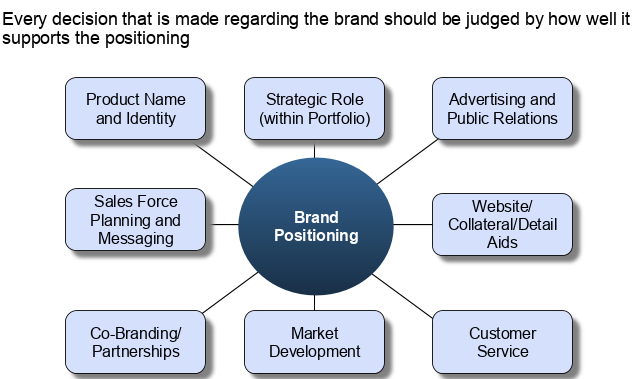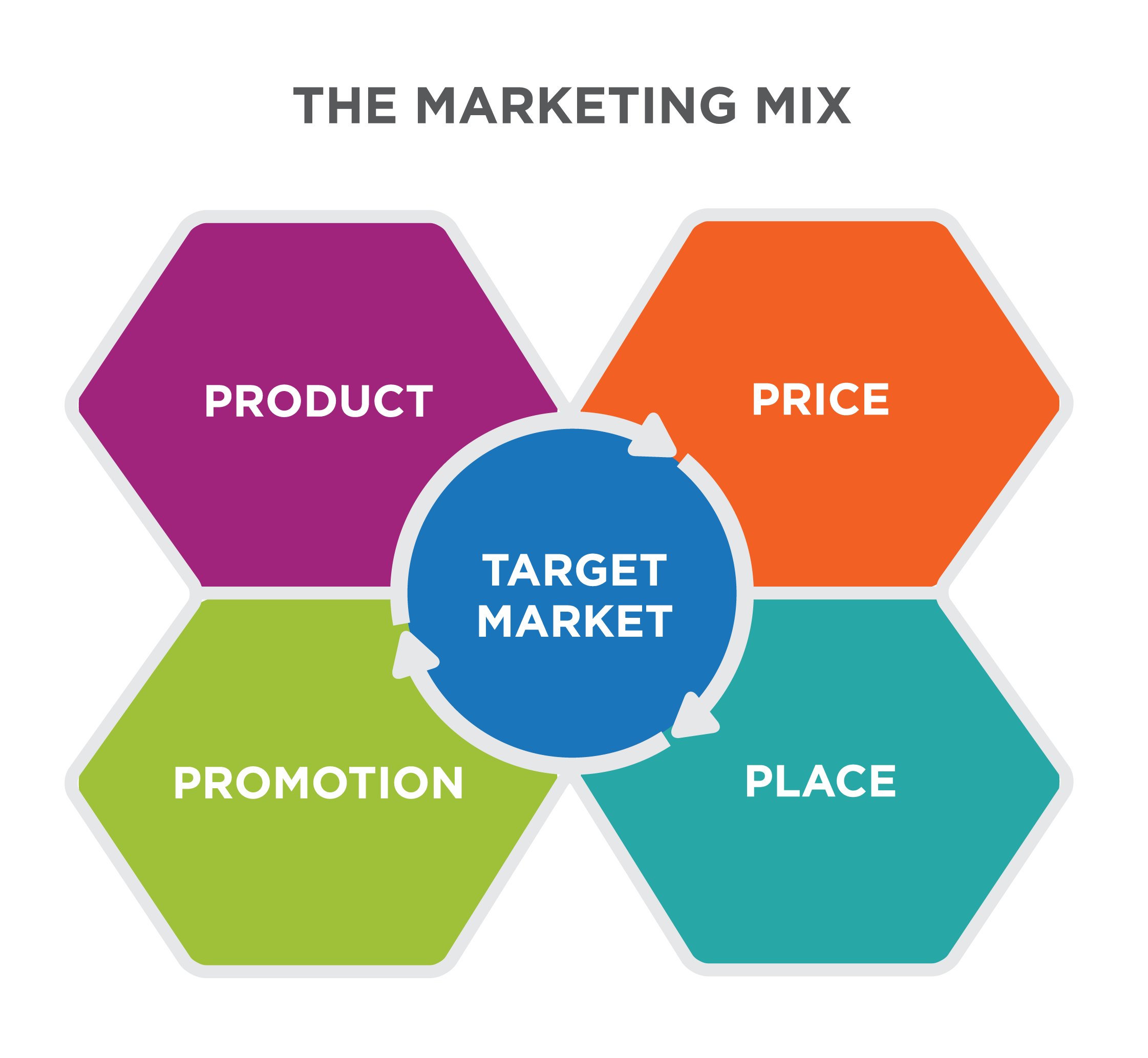131 Reading: Implementing Positioning Strategy
Putting Positioning into Practice
The positioning strategy, embodied in a strong positioning statement, is a touchstone for marketing and brand-building activities as marketers work to align everything they do in support of this core idea. In simple terms this means aligning the positioning strategy with the marketing mix.
Positioning statements provide a relatively easy way to check whether some aspect of the marketing mix is on target or off target: if a particular marketing message or activity reinforces the positioning statement, it’s probably consistent with your goals for reaching a target segment. If a marketing activity doesn’t reinforce the positioning statement, it will probably create some confusion among customers about what your product, service, or brand stands for.
What does this mean in practice?
As you consider what you’re doing in each area of the marketing mix, think about what your positioning statement is communicating to customers. Then ask yourself how each part of the marketing mix is helping you deliver on the expectations you are setting with those customers.
- Product: Is your product, service, or brand capable of delivering everything your positioning statement claims? Are any competitors doing it better than you? How should you adjust your offering to ensure that it lives up to the promises?
- Price: When it comes to pricing, how are you positioning your offering relative to competitors? If pricing is part of your positioning strategy, is your offering well aligned with the price you’re asking customers to pay? What pricing strategies should you consider in order to compete more effectively? (More on this in the Pricing module.)
- Place (Distribution): Are any distribution-related themes like convenience or availability part of your positioning strategy or competitive advantage? If so, what are you doing to ensure that you can live up to what you promise? How are you communicating your new positioning approach to distribution and channel partners, and how does it impact them? (More on this in the Place module)
- Promotion: How are you translating your positioning strategy into messaging and actual communications with your target audiences? What behavioral shift are you trying to create as you launch your new positioning? Where and how do you need to alter existing materials to make them consistent with the new positioning (e.g., Web site, print, ads, social media, marketing content, sponsorships, events, etc.)? What types of campaigns will you use to introduce the new positioning? Which communication tools will be most effective at reaching target audiences, and what are you doing to coordinate marketing messages and activities across different channels?

Persistence Pays
Implementing a new positioning or repositioning strategy is not a simple task. It takes time and effort to bring all the pieces together, to update the old and create the new. Implementing a positioning strategy resembles turning a ship: At first the maneuver is slow and deliberate. But once you’ve turned and charted the new direction, momentum picks up.
To be sure your positioning activities are having the effect you want, look for ways to measure the impact of your efforts. Depending on your goals and implementation activities, what you measure can vary, but may include one or more of the following:
- Sales/revenue
- Number of new/returning customers
- Average spending per transaction
- Brand/product awareness or perceptions
- Favourability toward product/service/brand
- New leads or inquiries from inside and outside your target segments
- Web site traffic
- Social media engagement
- Earned and organic media awareness
- Customer satisfaction
- Return on investment for marketing campaigns and other activities
Above all, don’t forget to check in with customers directly to monitor how they are responding to the new positioning efforts. In all likelihood, there are things that will work and things that won’t work as you introduce the new direction. Having a direct line to customers for constructive feedback and recommendations can help you identify potential improvements and adjust course early to strengthen your impact and results. Social media can be an effective and inexpensive way to generate the feedback loop.
Before leaving the topic of implementing positioning, another application of positioning strategy deserves attention. For large, complex organizations that have many products and serve many different markets and customer types, effective positioning is crucial. It’s the only way to ensure that the organization can deliver a coherent message and unique value to each target segment.
Example: Tyco Integrated Security
What does this look like in practice? Let’s examine how the electronic security company Tyco Integrated Security (TycoIS)(https://www.tycois.com/) uses positioning.
Tyco Integrated Security is a B2B company that sells electronic security products, installation, and services in the U.S. and Canada. They recently merged with Johnson Controls. TycoIS produces a variety of security-related products and services that can be used across many different industries and sizes of companies. When you think about the security-related needs of different kinds of businesses, you realize that their needs vary widely. A small business needs systems and processes that are affordable and manageable by a single person or a small team. Large companies have extremely complex needs around physical, financial, personnel, supply chain, and information security. Needs also differ by industry. For instance, companies in the food business are concerned about food safety, handling, protection, and complying with regulations and inspections in order to stay in business. Most other industries have similarly specialized needs.
Company-Level Positioning
TycoIS must communicate at several different levels in order to convince people that it’s the right partner for their business. Operating at the highest level, company-to-company, the following statement explains TycoIS’s company-level positioning:
We help companies protect their employees, customers, facilities, and operations from internal and external threats, and allow business to work smarter through enhanced security management and information management solutions.[1]
This positioning statement from the company’s Web site fits our positioning formula quite nicely, except for one thing: the defined target segment is “companies.” Is it possible to market anything effectively to all companies everywhere? No. This target is too broad. But it is a great starting point for businesspeople looking for security systems; it encourages them to delve deeper.
Two-Tiered Segmentation
To divide up “all companies” into manageable chunks for marketing purposes, TycoIS uses two different segmentation schema at the same time: segmentation by 1) organization size and 2) industry. Figure 1, below, illustrates how Tyco mixes these schema together:

Given the separate messaging for each business size, it’s clear that TycoIS has developed positioning around three unique market segments: small businesses, medium-sized businesses, and large enterprises.The “Small Business” positioning uses a tone of personal reassurance: “We’re right here with you.” And, going a level deeper, “We offer affordable products and services to help you, as a small business owner, protect your investment.”The “Medium Business” positioning mentions “industry-leading” solutions—a term that resonates with these organizations, which are striving to grow and become leaders. The “Enterprise” positioning emphasizes TycoIS expertise working at the global, national, and regional level. It also offers to “help enhance” security and business intelligence, rather than “provide” them. This subtle wording is wise: large, enterprise organizations tend to have a lot of legacy infrastructure and processes already in place, as well as in-house security expertise. With this positioning, TycoIS suggests that it will be an expert, helpful partner to complement and strengthen the security large companies already have.
Industry-Specific Positioning
Within each business-size segment, TycoIS has identified the common types of industries it works with. For each of these industries, TycoIS has unique positioning to convey that 1) we speak your language, 2) we understand your needs, and 3) we have a great combination of solutions just for you.

Figure 2, above, illustrates how TycoIS positions its offering for medium-sized businesses in the restaurant and entertainment industry. For this target segment, the company clarifies the category of security solutions it offers: physical security, theft protection, food inventory and protection for restaurants, nightclubs, and other entertainment venues. The messaging highlights TycoIS’s competitive advantage of offering industry-specific security specialists and business insights—on top of all the systems and gadgets it provides.This detailed, industry-specific positioning flows across each of the company-size segments, and it effectively communicates the following: “Regardless of your company size or industry, TycoIS has relevant experience and familiarity with your security challenges and needs.” On the company’s Web site, it is easy to browse the matrix of company types and industries to find the area that matches your business. Then, as you dig deeper, TycoIS’s attention to target-segment positioning ensures that you will find information that speaks to your unique needs.

It’s mind-boggling to imagine all the positioning-strategy and messaging work that has gone into this type of marketing effort. In all, TycoIS actively targets 35+ different business segments! Not every organization needs this kind of detailed targeting and positioning schema. But many organizations, ones smaller and larger than TycoIS, find that this highly targeted use of positioning strategy is an effective way to do business and support their ongoing focus on customer needs.

